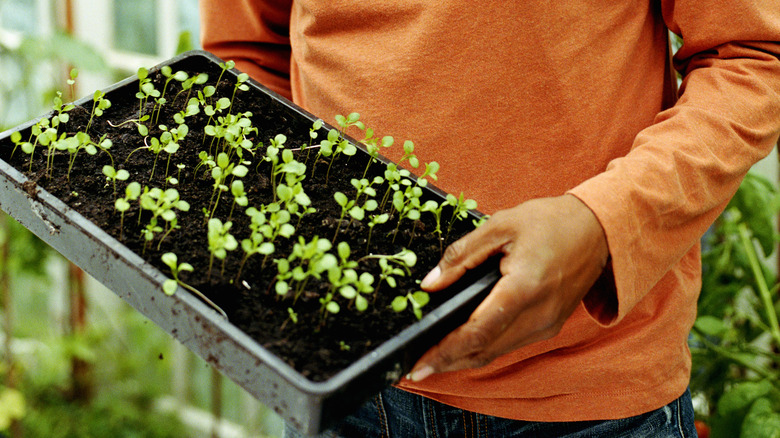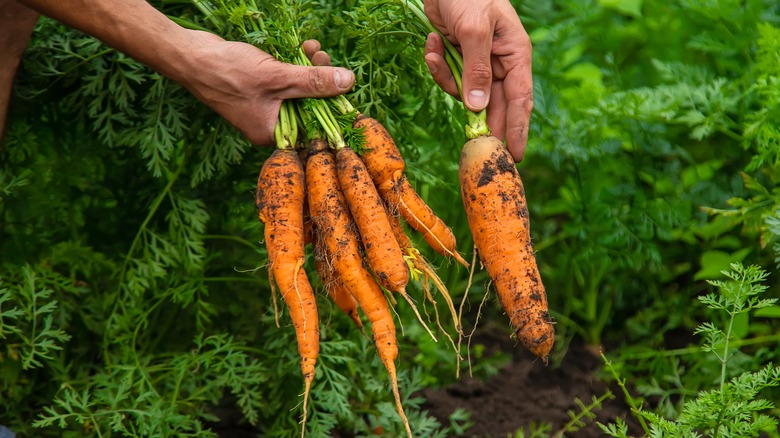Why Scissors Are Best For Thinning Seedlings
Gardening is an exciting and fulfilling activity, but if you're new to this hobby, the concept of thinning out your seedlings may be causing you some anguish. This is an essential part of being a successful gardener, though, and in order to nurture the health and potential for growth of your seedlings, sacrifices must be made.
Whether you're growing flowers, herbs, veggies, or anything else, it's really important to try to resist the urge to save your little babies by pulling each individual seedling out with tweezers for repotting. It may seem like a resourceful idea, but this isn't recommended, as you can easily damage the delicate roots of the remaining seedlings. The safer way to thin them is to use scissors to snip them at the base. Your snipped sprouts won't continue to grow, and you'll leave the other plants undisturbed so that they can grow strong and thrive.
How to thin seedlings using the scissors method
TikTok user Kia Jade demonstrates this method in one of her videos. She finds areas with a high volume of sprouts and then takes a pair of scissors to carefully cut the base of the unwanted seedlings.
To do this on your own, take a sharp pair of micro-tip scissors or fine-point bonsai shears and disinfect the blades with rubbing alcohol or clean them with soapy water. Snip the stem of the seedling at the base near the surface of the soil. Your tray will look quite sparse, and you might feel sad, but it's a good thing, have faith. Now the strongest seedlings have all the space they need to develop and thrive!
If you're growing vegetables, it's time to start snipping when each of the seedlings has grown two sets of leaves. The first set are "seed" leaves, and the second set are "true leaves." If you're growing flowers, the Royal Horticultural Society recommends waiting until the seedlings are 2 to 3 cm tall. It'll help your conscience and your final crop if you find weak-looking seedlings to snip first. Strong seedlings tend to look more compact and have thicker stems. Also, look for busy, more crowded areas.
Why it's important to thin your seedlings
As Kia Jade explains in the video, thinning is essential because it prevents overcrowded seedlings from competing for water and nutrients. When growing root vegetables like carrots, turnips, and beets, the practice is especially important — if they don't have enough space to grow underneath the surface of the soil, root growth will be stunted. Bearing in mind that the root, in this case, is the edible part of the plant, you won't be doing yourself any favors here if you fail to thin your seedlings out.
Overcrowding often leads to stunted roots and an imbalance of growth in the tops above the surface. In the case of edible tops like chard, you might think this is a good thing, but rather than achieve the large, crunchy tops that are a pleasure to harvest and consume, you'll get thin and weak leaves instead. Be aware also that if you're planting and growing your seedlings indoors, failing to thin out overcrowded areas could lead to the growth of mold due to a lack of air circulation.

